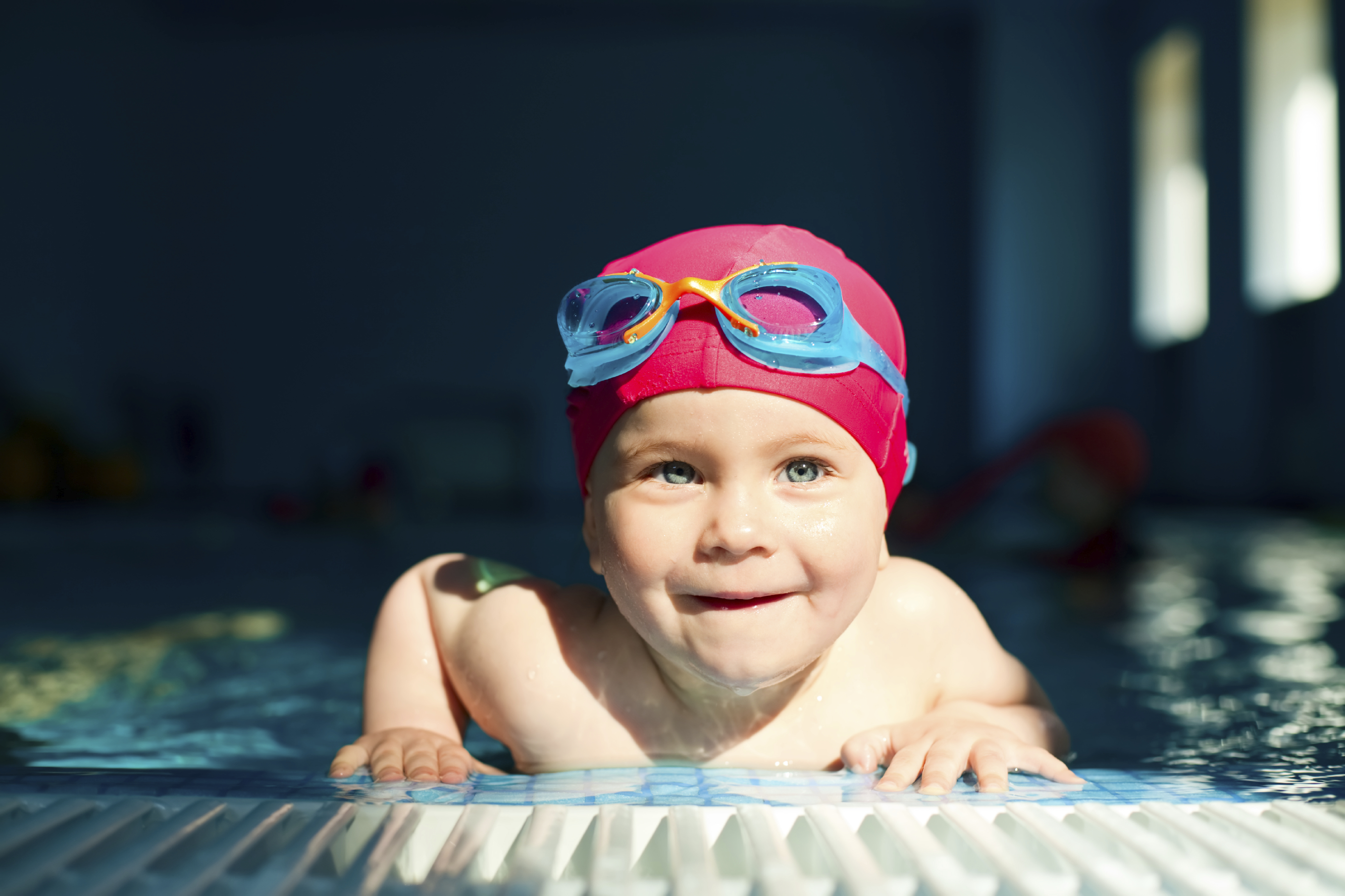 Have you been considering signing your child up for swimming lessons? It is generally advised that you wait until your child is at least 4 so he has the developmental skills necessary to float in the water. Before this point you can use water games to teach the skills necessary to get ready for swimming. Before long your child can develop a love for swimming and become comfortable in the water.
Have you been considering signing your child up for swimming lessons? It is generally advised that you wait until your child is at least 4 so he has the developmental skills necessary to float in the water. Before this point you can use water games to teach the skills necessary to get ready for swimming. Before long your child can develop a love for swimming and become comfortable in the water.
How to Teach a Child to Swim
1. Splash Water
Teaching your child to splash in the pool will help him get used to the movement of the water. If he knows what to expect in the water he will be less afraid. Hold your child and move his legs to teach him to splash or kick. If you are going to dip your baby in the water, keep it short.
2. Wet His Face
Blowing bubbles with your child can help him get used to the idea of getting his face wet, which can be an obstacle as he learns to swim. You can also sprinkle water on his head if he finds this amusing.
3. Overcome Fear
Your child may be frightened of the water at first, so hold him securely by the armpits and move him into the water slowly. Walk around in the water together until he feels comfortable, while you should smile and show your child that you are enjoying the experience. Children are likely to learn to swim easily if they associate being in the water with pleasure.
4. Float About
Show your child he can float naturally in the pool. Rest your child’s head on your shoulder and let his body float. This can be scary for your child at first so assure him that you will not let go and stop when your child is unwilling to continue, even if it only lasts a few seconds.
5. Take a Plunge
If your child can hold his breath and likes to put his face in the water, try coaxing him into going underneath the water. This should be done gently as the pressure on his ears or nose can be unpleasant as first. Start by encouraging your child to submerge one side of his head and then the other. As he gets comfortable, move into the water. Hold your child’s nose for him at first until he can learn to regulate the movement into the water on his own.
6. Play Water Games
As your child gets used to being in the water, start playing games together. Have your child chase toys in the shallow end of a pool, or hold your child on the belly to play “super hero.” You can also use floating objects like a kickboard to allow your child to race.
7. Kick the Legs
Teaching your child to kick in the pool is one of the first steps in teaching him to swim. Have your child hold onto a kickboard and propel himself through the water. Once he has this skill down, your child can start to learn the strokes necessary during proper swimming lessons.
8. Learn Strokes
Hold onto your child’s body so he can learn basic arm strokes. Show him how each stroke should go and practice on land so he can master the movements before you bring him into the water. As your child gets used to the movements remind him to keep kicking as he strokes. Eventually you will be able to stop supporting his body and allow your child to swim on his own.
9. Continue to Practice
As your child masters different swim strokes, ask him to move from the wall to you. Start by having him swim short distances on his own and slowly expand the width as his skills improve. You can set up relay races and other activities that will allow your child to practice without making it seem like a chore.
For more information on how to teach a child to swim, watch the video below:
Safety Tips on Teaching a Child to Swim
- Children under 3 should not be submerged in the water as they could swallow too much. This could dilute their blood, leading to seizures, sleepiness or nausea.
- Do not use swimsuits filled with air, water wings or other inflatable toys. If these deflate, your child will sink. Instead, look for a life jacket approved by the U.S. Coast Guard.
- Strongly emphasize basic pool safety to your child, such as staying away from the water without proper supervision or avoiding running near the pool.
- Those that have a pool at their home should have a self-closing fence that surrounds it. The latch for the fence should be out of your child’s reach.
- Be extremely vigilant when you visit open water like lakes or the beach. The skills your child has learned to stay safe in the water might not necessarily translate here from the pool.
